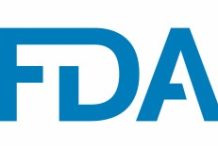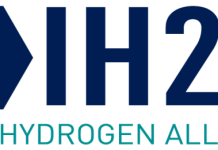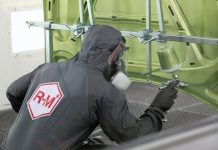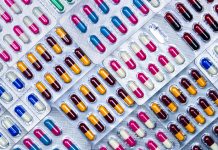
Author: Andrew J. Birnie, Ph.D.,
is the global life sciences product manager for Cole-Parmer. He gained a Ph.D. in Veterinary Parasitology in 2008 from the University of Glasgow and following some time in research moved to a commercial role within the molecular biology sector.
Introduction
The accessibility of PCR and qPCR systems has increased to where they are almost considered a commodity product today. This is certainly the case for end-point PCR systems and some qPCR units also allowing researchers to carry out gene expression analysis more conveniently and quickly. This accessibility has been an innovative development in the community and will continue to move research forward for years to come.
There have been concerns with regards to reverse transcriptase (RT-PCR) and real-time RT-PCR analysis of sensitive sample types such as RNA due to the stability of the sample during process and storage. Just how much impact this has had upon the results may go unknown. Recent advances into techniques such as digital PCR and new advances in extraction stabilization systems have sought to address some of these concerns.

Extraction
In theory, the extraction process is a relatively trivial matter: disrupt the sample’s cellular integrity and collect the released nucleic acids. However, it is never that simple. Multiple factors must be addressed.
When performing any nucleic acid extraction (especially RNA), stability and integrity of that extract must be considered. Samples being extracted in remote field studies must also take into consideration logistical concerns such as power supply, temperature control, availability to equipment, and shipping if samples are not to be tested onsite immediately.
Another concern with general tissue extracts is the heterogeneous mixture of cell states and types being sampled or extracted from. The result of performing an extraction from a mixed population of cell is apparent and will result in a gene expression profile which represents, at best, an average for that cell population. When considering tissue extracts in diseased or infected sample against wild-type expression, care must be taken to limit the number of wild-type cells in the diseased sample as these may affect the expression profile, or the wild-type cells themselves may have an altered gene expression due to proximity to a diseased or infected cell. This has previously been documented when bulk extracts are compared with laser micro-dissected cells. Due to the above, an ability to extract smaller volumes reliably and minimize loss of target material, or in some instances perform expression profiles on one specific cell, has driven the development of single-cell gene expression analysis kits.
The single-cell extraction and gene expression kits typically have few steps and contain reagents for the sample extraction, reverse transcription, a means to inhibit cell-sourced RNase and the qPCR components, making it a rapid system. Due to the small number of targets, the extraction process can have an impact upon the results of the real-time RT-PCR which must be performed quickly. Contaminating DNA can be removed with the inclusion of a DNase treatment step, typical of most RNA extraction systems. The advantages of such kits are apparent as there are limited chances to lose sample, and the target can be the exact cell type that should be profiled. A limitation of such kits could be their apparent high cost per extraction, but the possible advantages of gene profiling experiments from one cell cannot be overlooked.
Other more standard kits, such as silica column-based extraction systems that typically need more starting material than single-cell kits, require multiple liquid handling steps and washes, and require additional heating equipment and centrifugation. These type of extraction systems often require a specific kit for a sample type or to extract either DNA or RNA. Samples once extracted may be subject to degradation unless stored and treated correctly, especially RNA extractions. These kits are more commonly adopted, perhaps in part to the familiarity of the protocols, performance and the cost per extraction can be less than some other approaches.

Development of new extraction systems has continued and recently a novel extraction system has been introduced to the market requiring only two steps, limiting the manual pipetting error which can occur when multiple pipetting steps are required, and can be completed in three minutes at room temperature. The Arcis Sample Prep Kit provides high-quality, PCR-ready templates without the need for additional laboratory equipment such as centrifuges or hot blocks that are required with other approaches. The simplified workflow has maintained high yields and the Arcis Sample Prep Kit is compatible with common applications such as PCR (end-point, RT-qPCR), real-time PCR, isothermal amplification (LAMP), sequencing (Sanger, Pyro and Next Generation) and genetic profiling (electrophoresis).
This novel Arcis Sample Prep Kit relies upon smaller volumes of starting material than some column-based systems and, unlike other products, can extract both DNA and RNA at the same time removing the need and cost associated with having separate DNA and RNA extraction kits. The system is not enzymatic and has an added benefit of stabilizing samples at ambient temperatures, both DNA and RNA, for extended periods of time with minimal impact on Cqs or sample integrity. Stability data currently shows 100+ days for DNA and 6 days for RNA when stored in the Arcis Sample Prep Kit at ambient temperatures. Developments such as the Arcis Sample Prep Kit could enable more robust analysis of transcript levels, especially for those assays which are targeting low target expression, by limiting the degradation common in extracted RNA targets as well as simplify the process of transporting temperature-sensitive nucleic acids between sites as no cold chain logistics would be required in most cases.
Techniques:
qPCR
Controls are key in any scientific approach and developments in the PCR/qPCR field have attempted to limit spurious amplicon production which negatively impacts upon the target experiment’s efficiencies. Polymerases have become better immobilized prior to PCR and primer and probe developments have also helped reduce inappropriate binding and amplification. Buffer formulation for polymerases has also enhanced the performance of polymerases and made them more specific, sensitive and tolerant to difficult templates.
The results of poorly controlled qPCR have been well documented and can have significant impacts on the community and beyond. A well-documented issue which arose from publications in 1998 and 2002 in which an apparent association of the MMR vaccine and bowel inflammation with developmental disorders in children caused a number of incidences where children were not immunized. A number of court cases soon followed.
In these two papers, it was shown that the qPCR data was not correctly controlled and standard operating procedures were not followed, data analysis was incorrect and there were issues associated with the RT steps before the qPCR. The combined effect caused incorrect conclusions.
This and other cases resulted in scientists in the community generating the MIQE (Minimum Information for Publication of Quantitative Real-Time PCR Experiments) guidelines. The goal was to develop guidelines to promote laboratory consistency, help ensure the integrity of scientific literature, and increase transparency of experiments. These guidelines also provide information necessary for providing the minimum information for evaluating and reporting qPCR experiments.
System (PCR hardware) effects must also not be overlooked when carrying out sensitive assays. In general terms, variability across a PCR/qPCR systems thermal block is best limited to as little as possible as variability in temperature control may impact the result. Ideally systems with high uniformity should be used to limit data variability. Systems such as the Eco/Prime Pro from Cole-Parmer which utilise a liquid filled block to deliver best in class uniformity would be examples of such systems.
Digital PCR
Digital PCR (dPCR) was first developed in the mid-90s and recently has grown in popularity due to investment from some of the larger manufacturers. The technique was developed to quantify DNA or RNA transcript copy number as accurately as possible.
dPCR reaction components will be similar to qPCR and often use hydrolysis probes like qPCR. A differentiator from qPCR is that dPCR does not reference an internal control or standard curve instead counting the exact transcript number in the assay. This can increase the accuracy of the measurement when compared to qPCR. dPCR setup differs from qPCR in that after the similar reaction components are assembled, one large reaction mixture will then be partitioned into approximately 20,000 smaller reaction vessels by creating oil droplets within the reaction well. Each oil droplet has within it the required components for PCR to occur, and after amplification each droplet is then scored for presence or absence of the specific target being investigated and a profile for that target generated.
dPCR could still suffer from the issues previously discussed with regards to extraction but will have the advantage of scoring exact transcript number rather than determining this by plotting unknowns against a standard curve. dPCR has also been shown to have advantages in multiplex environments or when high sensitivity is required compared to other techniques.
Conclusion
There are several issues to be addressed when attempting to accurately define the transcript level of a specific target, not all of which have been covered here. Careful selection of an extraction system that helps stabilize and protect targets, especially RNA, or which allows for immediate analysis must be considered. The systems used after extraction must also be considered and careful selection regarding system accuracy may also factor into the decision.
































